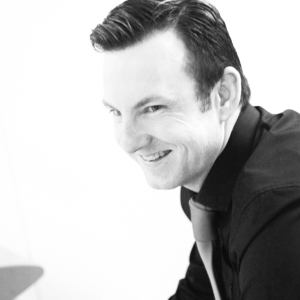The blame game
A few weeks ago my car was booked in for a service.
I booked it when I took the car in for a recall repair. When I booked the service I remembered how keen I was to get it booked and leave as the man I was dealing with stunk of cigarettes and it was making me feel ill.
He was a real pain, I asked for a Wednesday morning. I discussed various times that I could get there, and he just kept saying no. He was not helpful at all. In the end I was under pressure to get it booked to keep my warranty.
I booked the same Wednesday we were discussing for the afternoon at 2pm.
It’s a 45 minute drive for an appointment that lasts for 90 minutes. A huge disruption for me, but I booked it.
On the Monday I called to check it was definitely a 90 minute appointment as I had to leave by 3.30pm.
I turned up at 1.45pm. Nice and early.
At 2.20pm this same man came to me to tell me that the car would not be ready until at least 4pm, before catching a breath he then told me ‘there is a problem as the call centre booked your car in and they double booked you’.
Well that was it for me, I was like a red flag to a bull. He has lied. I booked it with him.
I told him he booked it and he went into battle with me that it was not him. I told him he did, the date and time it was booked, where he was sitting and that he stunk on the day. He called me a liar!
It’s now 2.30pm. I asked for the manager.
He repeated the same story. I had now officially lost the will to live. I was leaving and never returning. (I have since been to another garage further away and had my car serviced!)
I know that in day to day practice situations with patients can quickly escalate and get out of hand. The main problem is that you do not think of the patient, you think of excuses you can make, you are trying to remember the fake story you have been told to communicate instead such as “the lab have messed up” rather than “we forgot to post it on the day of the impression so the lab can’t get it back in time”.
The other problem is that you are reactive and not proactive. This was my point to the garage, why don’t you look ahead? Why wait for the moment to arrive to see you have a problem?
The same applies in your diaries, you should be constantly looking ahead and reviewing the diary to spot problems, including the patient that you know is always late. Don’t let them be late and mess up everyone else’s day, call them and let them know that you do need them to be here by 2pm the next day, or 1.55pm as you need them to fill in forms.
Back to the patient – when things go wrong first of all think of them. What have they booked after this appointment? Where do they have to be? How difficult was it for them to be there on that day in the first place? If they have made a huge effort then you need to too, by being honest.
There will always be days when it goes wrong, systems fail us, but when they do do not blame people that actually have nothing to do with it, be honest instead and the patient will respect you a lot more for it. Lies have a way of catching up on you, we do not forget little things and patients won’t too!
Laura

Dress code policy… I vote yes
I was watching a debate on Loose Women about make-up been worn at work (you now know my guilty TV pleasure).
I love a good debate and this one struck a cord. It has been revealed last week that Virgin are relaxing their rules on make-up and now cabin crew can go make-up free. I have to say that I am disappointed with this move, as this gives the team too much choice and I know that it doesn’t work when this happens in dental practices. Moving forward to Virgin, I feel they are giving out a mixed message.
Here is their statement via BBC news
“Virgin said cabin crew could now work without make-up, but were welcome to follow the palette of lipstick and foundation set out in its guidelines.
Virgin Atlantic spokesman Mark Anderson said: ‘Not only do the new guidelines offer an increased level of comfort, they also provide our team with more choice on how they want to express themselves at work.'”
So the choice is no make-up or they were welcome to follow the palette! I can see this rule being reversed at some point when team members push the envelope. I agree that team members should be able to wear trousers and not dresses but expressing themselves at work is a no for me. If you are at work you are not there to express yourself in what you are wearing you are representing a brand. I wear a suit regardless of the day, I wouldn’t dream of wearing comfy clothing to present in or to attend a practice. I can remember wearing black shorts for a few weeks in summer one year, the outcry from the team and patients was enough for me to go straight back into black trousers, lesson learned.
We at Horton recommend that you really invest in a branded dress code policy for your team, which includes an essential list of what is allowable. Here are our tips:
- Uniform – Each team member to be supplied a uniform (employed paid for. Self-employed, expected it’s part of working for your brand). Uniform has to be pressed. Top tip – have an iron and ironing board in your practice.
- Make-up – Select a palette of colours you’re happy with so that you don’t get the party face at work. The clinical team often wear less make-up; for the reception team, treatment coordinators and managers I would expect a look that is ‘fresh and professional’.
- Nails – short and no nail varnish for clinical staff. For the non-clinical team pick a palette of colours – it is not acceptable to have chipped nail varnish.
- Hair – tied back for clinical staff. For non-clinical I would have rules on how it can look, styles you are happy with, some practices even ban certain colours. Decide on appropriate hair bobbles and grips, and pick a palette of colours for them too.
- Facial hair – this is important for male colleagues as it is certainly in fashion, but beards need to be well managed and trimmed.
- Shoes – I see so many shoes that are not fit for purpose, like uniform, pick styles of shoe that are suitable, from heels to clinical shoes. Use the same policy for buying in shoes too.
- Jewellery – confirm items that are allowed, this is really easy for the clinical team as rules are established but not always adhered to! Non-clinical staff need a clear guide of what is acceptable, remembering that less is more.
- Name badges – So important and so often missed off, this completes the appearance for me, first names and job titles are the two important aspects here.
- Tattoos – The most controversial and some practices are much more tolerant than others for many reasons. There are arguments on both sides but here is some guidance from a UK HR company called 24 HR whose article we found on their website:
“Apart from religious markings, body art is not considered a protected characteristic under the Equality Act 2010, therefore employers are free to base their hiring decisions on this aspect alone. Furthermore, in certain circumstances and where there are no contentious issues to consider (as well taking into account an employees’ length of service), employers could consider visible body art as a valid reason to dismiss existing employees, especially if they are frequently dealing with clients and customers.”
Michael

Damage control for your brand
I am really fortunate to have many clients in Ireland and even more so to be served from Stansted airport to every airport in Ireland by Ryanair.
Ryanair – gosh they have a bad reputation. I do not agree with the number of flights they cancelled last summer in any way shape or form, but I do defend their day to day runnings, even when I am the one left hanging around in Dublin airport for hours.
Ryanair essentially provides a shuttle bus service from London Stansted to Dublin every day. Flights start at 6.30am and finish at 10pm. The planes are back and forth and therefore end up with delays.
When people are whining and moaning and blaming Ryanair I have to tell them that 9 times out of 10 it is the handlers called Swissport, they are useless. They do not have the bags on or off, no special assistance equipment, nor stairs even to get people off the back of the plane – the list goes on.
Last summer they took 4 hours to get bags to the reclaim.
Every time I travel I get an email from the airport asking for feedback on my experience. Last year I started to respond (every week at times) updating them on Swissport, asking why they still had them in contract, why were they letting them ruin the brand of the airport and the airlines. No wonder Easyjet started to move flights to Southend!
I even took a photo of a handler vaping in a truck outside a boarding plane and tweeted it to Swissport once. That’s how bad their culture was at Stansted.
No-one came back to me, no-one replied. I was not surprised. (They did reply about the vaping.) But thanks to the media Swissport are no more at Stansted airport.
This week I have boarded a plane 30 minutes before take-off, taxied 10 minutes before and guess what, we were in the air at 12.22; two minutes later than the departure time. This I can tell you is nothing short of a miracle, and I may now have to make sure I arrive more than 50 minutes before my departure time!
Ryanair now uses ‘Blue Handling’ a handling company potentially white labelled to them – it is a good move and was contracted via tender. I asked the aircrew about the change – they were chuffed that they no longer had to use Swissport too.
I know time will tell but already being an airport passenger is looking up.
But what took Ryanair and London Stansted airport so long?
Why did they leave it until it got so bad that they made BBC news with the 4-hour bag wait. Why at only this point did they make the public aware of Swissport?
Damage limitation. A noun unknown to them?
If you have any system or person in your business that is causing damage to your brand you have to do something about it. For people to comment or complain you have to understand that that is huge and you need to stand up and act.
Do not bury your head, do not carry on. Whoever the company or person is they are making mistakes, they are ruining you.
Damage limitation.
Laura

The professionalism of a handshake
During patient experience development training I am always discussing the etiquette of the handshake. When and most importantly how.
No-one wants a wet lettuce handshake and no-one wants a never-ending handshake.
During this aspect of training there are always team members that cringe; I can see the look on their faces – they do not want to shake hands with patients.
Clinicians usually do shake hands and are happy to as they know it is a professional thing to do, but nurses and front desk team members are never keen on shaking, for example, a new patient’s hand. The number one reason is germs.
At this point I will confirm that it is ok to sanitise your hands or wash them afterwards as I do understand their concerns regarding hand hygiene. When it comes to hand hygiene I have OCD myself and by sharing this with the team it really makes them think.
My OCD is like this:
- Short nails always
- Alcohol rub before going anywhere ‘public’ – I will not touch a shopping basket, trolley, door handle etc
- Alcohol rub hire car steering wheels when I get in the car and door handles in hotel rooms when I arrive.
The list does go on, yet as a team member I was more than happy to shake a patient’s hand as it was professional to do so and I worked in the high-end establishment therefore it was expected.
As the discussion continues the team often see that if they are happy to touch a trolley or shopping basket or dare I say it a petrol pump without thought of germs then they are certainly over-reacting to shaking the occasional patient’s hand!
The handshake is professional, it is needed in a five-star patient experience not just from the clinicians but from all of the team; it is important it happens and important that it is right.
Around 20 + years ago I remember a late night Channel 4 programme called Banzai. On this programme they featured ‘Mr Shake Hands Man’. I know some of you would not have watched such rubbish and others were too young to remember but here is a clip that was uploaded to Youtube in its infancy. Have fun watching and add ‘the handshake’ to the agenda of your next team meeting.
Laura
